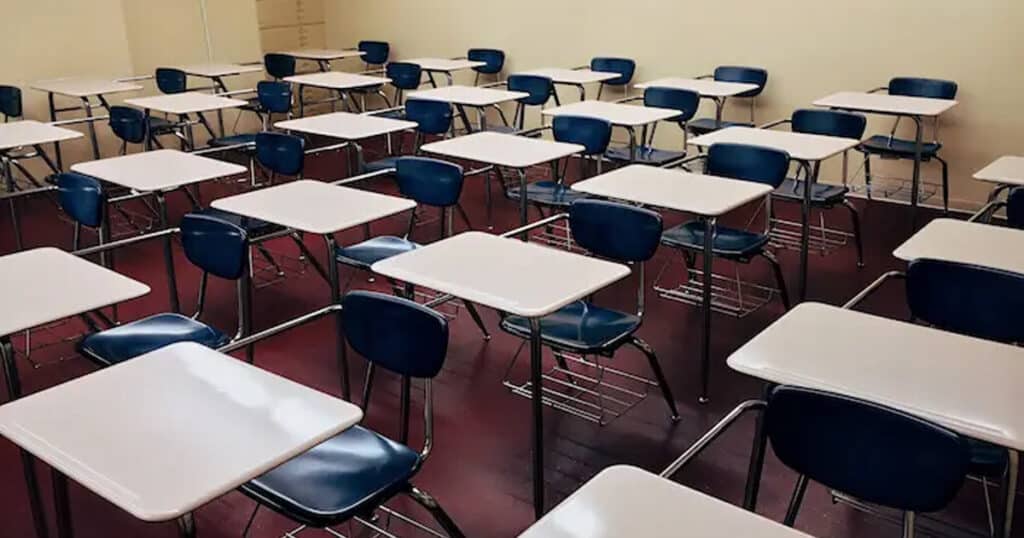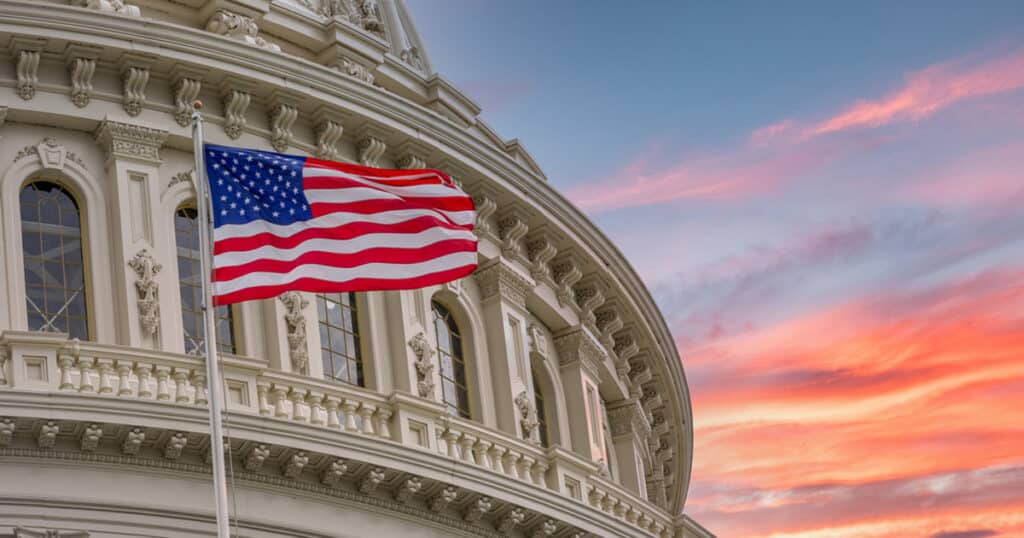
Another COVID Fail: School Budget Cliffs With Gaping Holes
New York City’s school system went on a spending spree during the pandemic, thanks to the $7.5 billion in federal money it received as part of a $189 billion national relief package aimed at addressing education problems incurred by lockdowns and school closures.
Although the funds were nonrecurring, the nation’s largest school district used some of the money for enduring budget items and programs, including hiring 500 social workers, opening new bilingual programs, and expanding summer learning centers.
Now, the district faces a “fiscal cliff,” a situation in which spending creates budgetary needs in the future after a financial windfall is depleted.
“I am … deeply concerned about how the [New York City Department of Education] will sustain many long term program expansions, which rely heavily on federal relief funds,” Rita Joseph, a New York City Council Member and the chair of the council’s Education Committee, told her colleagues in November.
New York is joined by numerous other school systems that used the temporary funds to beef up staff. Some are already handing out pink slips.
In Stockton, Calif., the district is laying off 19 full-time employees hired with part of the $241 million the school district received in COVID relief. The district acknowledged that some of the money, which funded a total of 163 positions, was misspent.
Seattle schools received $145 million in relief and is handing out pink slips to up to 70 employees as it struggles with enrollment that has dropped 16% since 2020. Relief spending included $1.4 million on “equity work” and “response to racism.”
The district acknowledged its economic mismanagement in a public notice explaining its $131 million deficit: “Enrollment has decreased … while staff has increased.”
The fiscal cliff did not come out of the blue, as districts were warned of the challenges they would face in sustaining longer-term programs after the federal tranche was exhausted.
K-12 education last faced widespread financial trouble in 2009, as the Great Recession prompted government to provide nearly $50 billion in relief to districts, which reacted in a way similar to now. Layoffs and budget problems soon followed hiring and expansion.
“Districts are optimistic that something will happen that will not force them into making hard decisions,” said Chad Aldeman, a school finance pundit and founder of readnotguess.com, a reading instruction website. “They see labor costs as fixed, so they don’t do a good job of scaling up or down. They have a hard time downsizing.”
A recent Rand study found that 77% of school districts used the federal money on exactly what numerous other fiscal hawks cautioned against: beefing up staffing with little regard for the future. “Roughly half of district leaders see a fiscal cliff looming after coronavirus disease (COVID-19) federal aid expires,” Rand researchers reported. The study noted that over three-quarters of public school districts have “increased their number of teaching and non-teaching staff above pre-pandemic levels.”
As in Seattle, districts across the U.S. are realizing that they made a mistake. The jobs of teachers, mid-level administrators, and low-level employees alike are on the chopping block. Also in danger are after-school programs, tutoring, and counseling, all aimed at addressing the damage caused by widespread school closures, typically locked down under strong pressure from teacher unions.
Aldeman added that “politics becomes part of a broader narrative, as some districts think they will be able to sustain this going forward and that they can go to lawmakers and say, ‘We need to keep this going.’”
Molly May, an assistant superintendent in the Eanes school district of Austin, Texas, said the pandemic “exacerbated” the district’s ever-present need for more funding and “the need did not go away.”
“Losing this (federal) funding without additional financial support from the state will create even more difficulties for districts,” she told an Austin newspaper in January. May did not respond to an interview request.
Many educators agree that Elementary and Secondary School Emergency Relief, or ‘ESSER’ funds, were an important stopgap as districts dealt with the effects of school closures and remote teaching.
The Coronavirus Aid, Relief, and Economic Security Act, or CARES, in March 2020 approved $13.2 billion in ESSER funds, which were ramped up twice more: An additional $54.3 billion was approved in December 2020, and another $122 billion in March 2021, for more than $189 billion in total relief.
The federal largesse was unprecedented and came on the heels of a 4.7% public education funding increase to $752 billion in 2019, “the most per pupil in more than a decade,” the U.S. Census Bureau reported.
The ESSER money came with few spending restrictions except for time, as the cash had spending deadlines, which have passed for the first two installments. The deadline for disbursing the third payment is September 2024.
‘Double-Digit Pay Increases in Perpetuity’
“This is the largest federal infusion of money in schools ever, around $4,000 a student,” Jessica Swanson, senior fellow at Georgetown University’s Edunomics Lab, told RealClearInvestigations. While some districts have used the money wisely – for facility upgrades, counseling, and tutoring and pay increases, “other districts have given double-digit pay increases in perpetuity, and these districts will be stuck with high labor costs. Some districts did this even with declining enrollment.”
Public schools saw increased enrollment before the pandemic, but students have fled schools since 2020, with an estimated 1.1 million students lost to home schooling, private schools and other options. The drop hamstrings most districts, which receive per-student funding from states.
While many districts are spending their relief on pandemic-related mitigation, others found less strategic uses for the cash. Regardless of use, many of the programs require future funding.
Among the other school districts nearing the cliff:
- The La Joya, Texas, school district has announced plans to lay off nearly 120 people, as it’s spending $300,000 on “inclusive” playground equipment and a new operations center with part of the $228 million in ESSER money it received.
- The school district in Fort Worth, Texas, in late March announced it would lay off 116 employees, mostly from administrative ranks. It had approved spending $171,000 of the district’s $407 million in pandemic money for five vans to transport the district’s gifted and talented students. It also went on a hiring spree, paying hiring bonuses to teachers. Warned of the district’s $80 million budget deficit in December, school board President Tobi Jackson said, “I’m not real concerned about it …”
- Augusta, Maine, received $6.9 million in ESSER funds, yet is now facing a $6 million budget deficit and pondering staff cuts while blaming inflation and teachers’ union demands. It is spending part of its relief money on new janitors, “interventionists” for middle and elementary schools and “providing teacher support through Math Mentors and Curriculum Leader[s] …”
In New York City, the alarm was sounded by the Citizen Budget Commission, a fiscal hawk that has served New York City since the 1930s.
“The fiscal cliff is particularly a concern for [the department of education],” the commission said in a May 2021 report, titled “Federal Aid Now, Fiscal Cliffs Later.” The windfall, the group warned, should not be used for new and expanded programs, such as more afterschool programs and additional teachers, which would create a budgetary mess that would include layoffs.
School administrators ignoring the advice held out hope that revenue would increase, a questionable proposition in a district that has lost 90,000 students, nearly 8%, since 2020.
“The focus is often to fill a shortfall this year and worry about everything else the next,” said Ana Champeny, vice president of research at the Citizens Budget Commission. “There were plenty of people who questioned the budget director when these plans were being announced. “
Within months of receiving the first installment of federal aid, then-Mayor Bill DeBlasio spent $3.3 billion of it on a pet project, universal pre-kindergarten, creating a scenario in which the district will have to spend millions a year to sustain the program starting in 2024, when the relief money runs out.
The New York scenario looks set to play out nationally, as districts seek to continue some of the programs that are being introduced through the relief program.
It’s too early to know which programs have been effective, and many districts and states are currently trying to determine what best benefitted students.
“There is a lot of learning now about what is working,” said Austin Estes, the program manager for the Council of Chief State School Officers’‘ COVID relief data project. “I would expect districts to be thinking about continuing investments into those programs into the future.”
Which means more demands for increased education funding.
“There is flexibility in existing funds to support these programs,” said Estes, whose group tracks how state education agencies are spending their portion of ESSER money. But, he added, the education lobby will also try to convince state lawmakers to support more school funding, a longtime political issue.
State education leaders “are taking an interest in ESSER-era innovations and are thinking of continuing them,” Estes said.” A lot of this investment was designed to get schools reopened and help students recover, so just getting students back on track is a win. We don’t know what the education word would look without this pandemic funding.”
This article was originally published by RealClearInvestigations and made available via RealClearWire.



